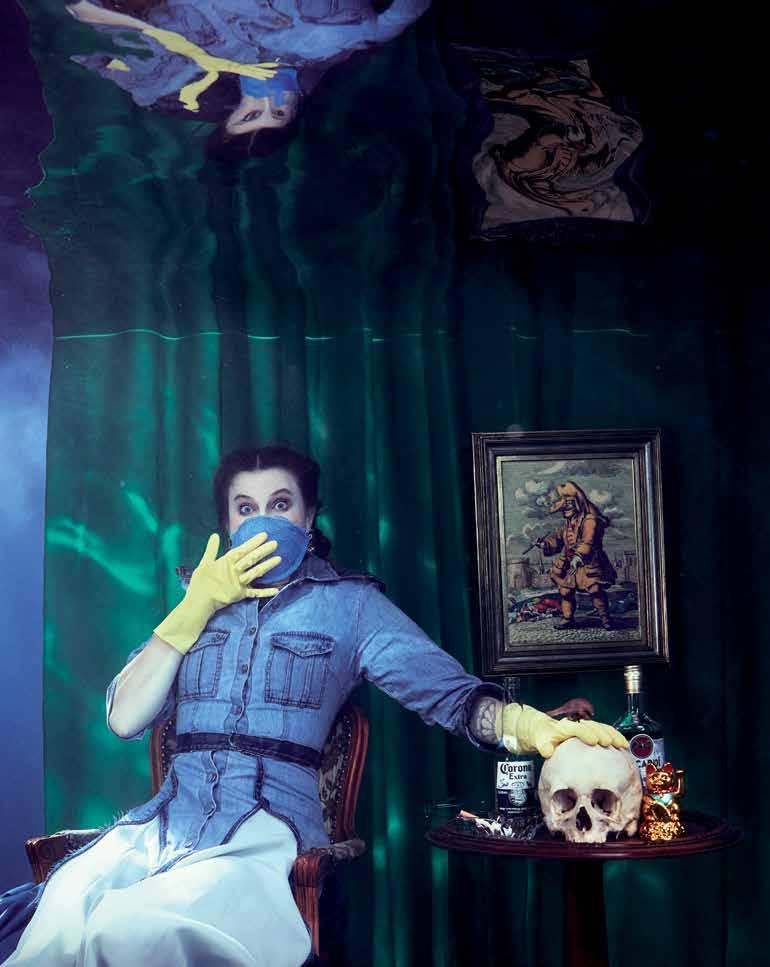
4 minute read
Designers seeking digital
The future of fashion Brussels-based brand communications expert Vaya Sigmas outlines the effects of Covid on the industry
By Sarah Schug
Advertisement
• Vaya Sigmas Vaya Sigmas manages her own advisory office and creative studio in the fields of fashion, luxury, lifestyle and design. Her job is somewhere between creative director, brand communications strategist and digital marketing advisor, helping her clients develop digital strategies, strengthen their image and, ultimately, grow their brand equity. In May, Brussels-based Sigmas published a white paper offering advice on how to get through the pandemic, which has had an impact on the fashion industry as a whole.
In the fashion industry there is talk of an existential crisis – do you agree?
Yes, as the second most polluting sector of activity, there is a need for fashion companies and the industry at large to reconsider how they do everything, from A to Z. This year, the pandemic has shed more light on the unsustainability of the speed-to-market strategy, on the waste of material, on the high pollution impact of garment production and on the high environmental costs of the fashion industry lifestyle, flying around the world from meeting to event. The virus is not the trigger, it has only been an accelerator for global change, a catalyst. When everything shut down last March, all these aspects of the industry came under scrutiny. Everything is being questioned and new approaches are being tested.
So the pandemic could have a positive impact on the fashion world?
There’s a bright side to it. There are now fundamental shifts taking place, which can turn into new habits. The crisis has indeed emphasised the need to move towards more responsible ways of working at all levels of the value chain. Most fashion shows were broadcast live on the internet this year and many brands have questioned the unsustainability of the fashion calendar. Gucci, for instance, decided to downsize from five to two seasonless shows per year. Trade shows are now taking place on virtual platforms, using 360° video technology, as well as 3D models. The resale market also rose as a major 2020 trend among all players, from luxury to mass-market. So, one way and another, it is an exciting time.

How are local designers faring?
Fortunately, none of my clients have had to close down. There have been issues of access to production lines, especially when located outside Europe. Obviously, those who had already undergone digitalisation were more resilient and better prepared when the first lockdown occurred. Yet I tend to observe that Belgian brands, especially designer brands, are already pretty resilient because of their business model that requires flexibility, creativity and smaller stocks. Since early spring, I have also received a lot more questions regarding digital communications and being more efficient online. Many also told me they were using this period of cancelled events to rethink their brand identity and their value proposition. So another bright side might well be a boost in creativity.
What is the white paper about?
This white paper is part of our Insights & Recommendations studies that we publish and present. This particular paper aimed to make fashion and luxury businesses more resilient in the face of the Covid disruption. It consists of digest insights, highlighting shifts in consumer behaviour, and advice on responding to them from a marketing and communication perspective.

The idea of producing it, and distributing it freely, came to me after calls with clients who wanted to shift the topic of the coaching sessions to dealing with the Covid crisis. The answer was easy: “stick to the plan”. Going digital isn’t an option anymore, it’s a must.
Digitalisation, omni-channel marketing or online brand experience have become even more essential in order to survive, exist and ultimately thrive as a fashion, lifestyle or luxury enterprise.
vayasigmas.com
MY CORONA!
Photographer Harry Fayt loves the surrealism of images shot underwater. In this striking photo inspired by the pandemic, he plays with gravity and special effects such as smoke rising eerily to the surface where the model and props appear in a distorted reflection. Each element of the image, AB Extra Corona, is meticulously staged, but humour accompanies his inspiration, as does a desire to question the role of citizen and government in managing the crisis.
Though the pandemic provoked a drop in sales of Corona beer, it resulted in increased sales for the alcohol and tobacco industry in general. As Fayt points out, “at the beginning of the pandemic, smokers were said to be less at risk.” If viewers look carefully, they can spot the bat logo on the Bacardi bottle, and a toy pangolin alongside it. “The poor creature was wrongly accused of infecting humans,” he says. The old master in the background shows a doctor during the Great Plague of Marseille, the last major outbreak of the Bubonic plague in western Europe, which started in the French mediterranean city in 1720. The model wears washing up gloves and a mask upcycled from a bra; an allusion to the potential danger of a shortage of personal protection equipment. The discarded masks represent “the tonnes of plastic pollution in nature”.
Fayt was born in Charleroi, has a photography degree from Namur and has been based in Liège since 2006. His Covid-themed images follow other series on the female figure in water. Drawing on his extensive experience as a music and fashion photographer, they include modern icons – personal reinterpretations of Renaissance art works – and a series of nudes, the subject of his book, Rebirth.
harryfayt.com










